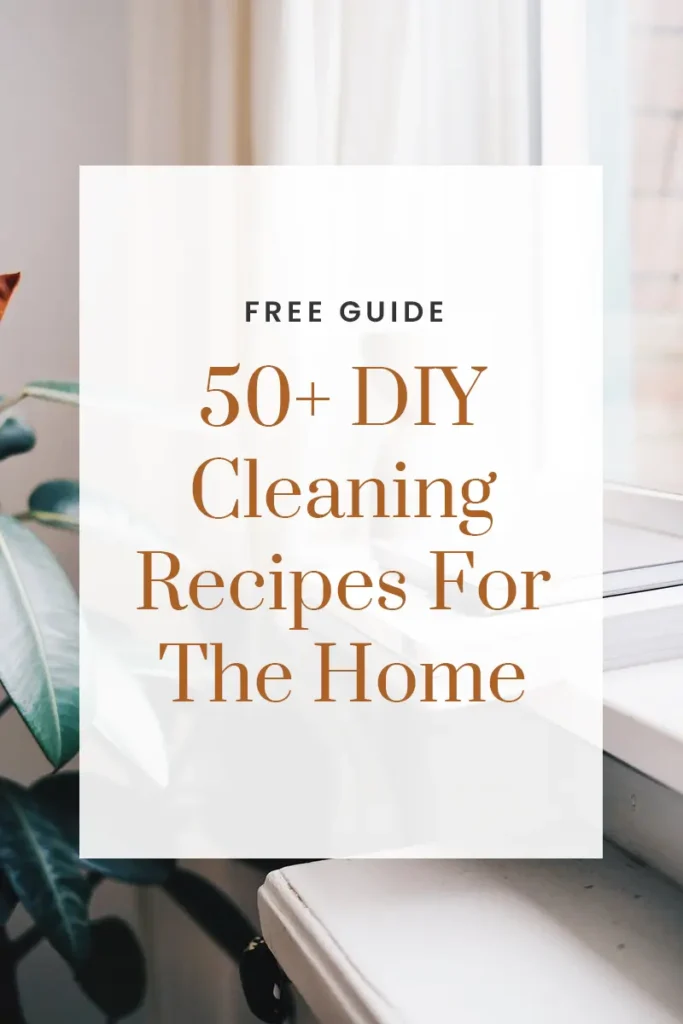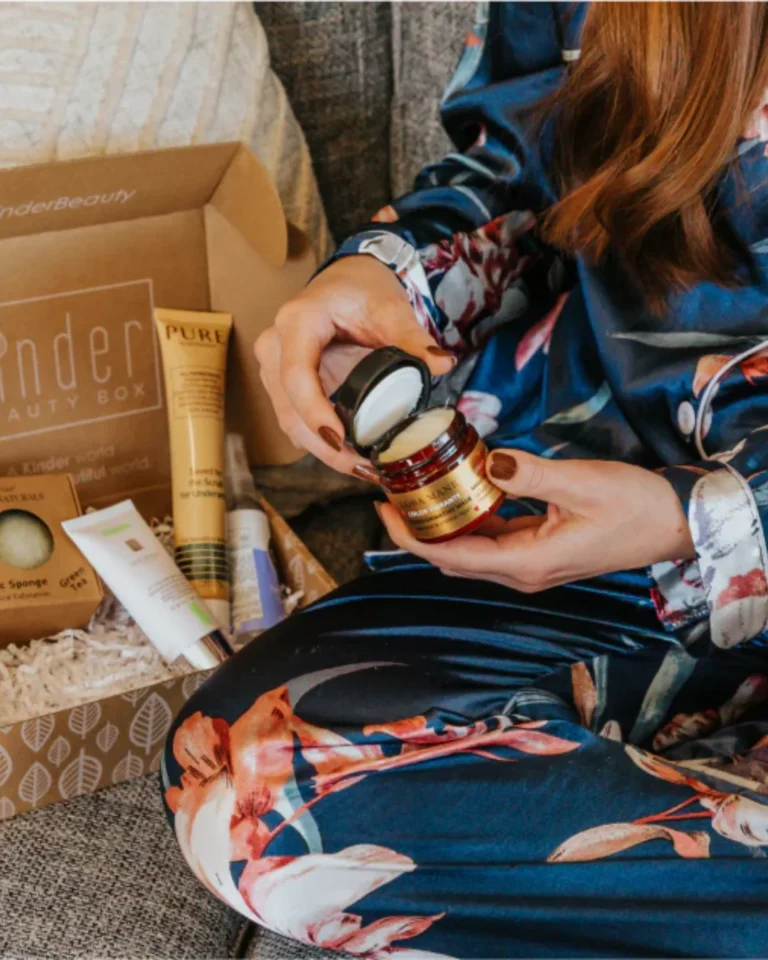SKL is reader supported. When you buy through links on our site, we may earn affiliate commission. Learn more here.
In this epic guide, you’ll find the most toxic household items hiding in your home along with super-safe alternatives.
Beyond the most common items like air fresheners and non-toxic cookware, numerous under-the-radar products might be silently posing risks to your health.
Take carpets and rugs, for example. Most of them are treated with stain-resistant chemicals or flame retardants that may emit VOCs into the indoor air. Even some older mattresses may contain flame retardants that can release toxic gases over time.
Now, listen. There’s no need to lose your mind over this. Take it one swap at a time, starting with the most budget-friendly and DIY options first (think vinegar and baking soda!), and your home will be a safe haven soon enough.
P.S. Don’t forget to check out the 21 Best Non-Toxic Swaps To Make For A Healthy Kitchen!
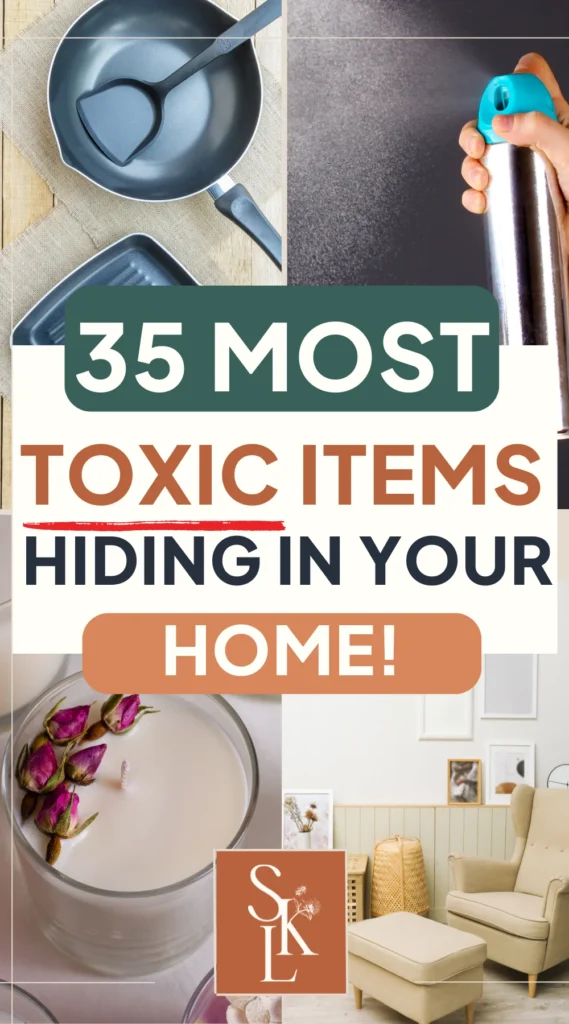
The Most Toxic Items In Your Home & How To Replace Them
Let’s get one thing out of the way. No home is completely and utterly non-toxic. Not even mine.
Despite our efforts to choose greener alternatives, the sheer volume and variety of products make it challenging to completely eliminate all potentially toxic substances.
Also, unfortunately, some harmful ingredients may be hidden under generic terms or masked by appealing packaging. You may not even have the budget for a complete non-toxic home upgrade just yet. And, that’s ok!
This round-up of the most toxic items in your home should not instill fear but rather help you reduce toxins in your home as much as possible.
Take, for instance, the cleaning products we use to maintain a sanitary living space. While effective, they often contain chemicals that, with prolonged exposure, can lead to respiratory issues and skin irritations.
We simply want you to stay informed about the products you bring into your home and maybe find some great, safe alternatives to dangerous household chemicals that work for you! So, instead of attempting a complete overhaul, why not have a gradual replacement strategy?
While we cannot possibly eliminate every potential risk out there, we can embrace a holistic approach that prioritizes our health and the health of the planet.
So, let’s explore the alternatives to the most toxic items in your home.
What are the most toxic items in your home?
In most households, one of the most potentially toxic categories of items is home cleaning products.
These products are designed to keep our living spaces clean and hygienic, but some can pose health risks due to the chemicals they contain.
These solutions include bleach (sodium hypochlorite) which is a powerful disinfectant that can irritate the eyes, skin, and respiratory system. It can release toxic fumes when mixed with other chemicals.
Most options also have ammonia, phthalates, and triclosan, which is an antibacterial agent that has been associated with hormone disruption and antibiotic resistance.
What is the most common household toxin?
The most common household toxic is formaldehyde. Formaldehyde is a colorless gas with a strong, pungent odor, and it’s found in various household products and materials.
This includes furniture, paints, and even cosmetics and fabrics! Inhalation of formaldehyde vapors can irritate the eyes, nose, and throat. It may also contribute to respiratory problems.
Prolonged exposure to elevated levels of formaldehyde has been associated with more severe health issues, including an increased risk of certain cancers.
Check out our list of the most toxic items in your home to find stellar alternatives for every single product!
1. Non-Stick Cookware
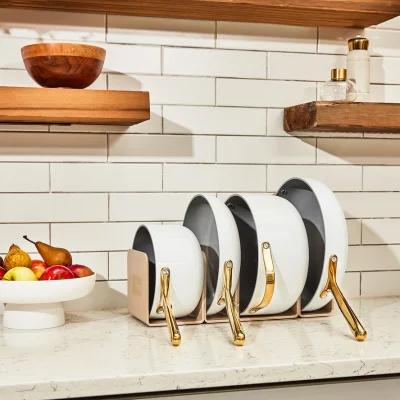
Let’s start with the basics and one of the items we use the most in our homes – cookware!
Non-stick cookware is often coated with polytetrafluoroethylene (PTFE), commonly known as Teflon, which can release toxic fumes when heated at high temperatures.
Overheating non-stick pans may lead to the release of perfluorooctanoic acid (PFOA), a potential carcinogen.
Consider switching to non-toxic cookware with alternative coatings like ceramic or stainless steel to minimize exposure to these potentially harmful substances while still enjoying the convenience of non-stick surfaces.
Best Non-Toxic Cookware Brands:
2. Air Fresheners
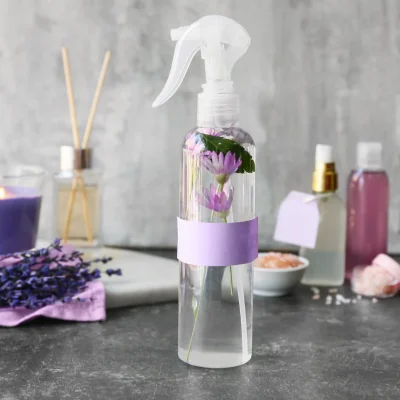
Tantalizing scents may seem harmless, but many air fresheners, be it sprays or plugins, release a cocktail of synthetic chemicals into your home.
Think volatile organic compounds (VOCs) such as formaldehyde, benzene, toluene, and ethylbenzene.
These dangerous household items can trigger headaches, and allergies, and even contribute to long-term health issues like asthma.
Opt for natural alternatives like essential oil diffusers or homemade room sprays to keep your home smelling delightful without compromising your well-being.
Best Non-Toxic Air Freshener Brands:
3. Scented Candles
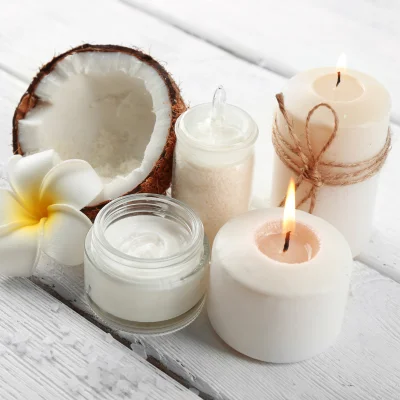
Who would have thought that candles could very well be one of the most toxic items in your home?
While scented candles create a cozy ambiance, the artificial fragrances they emit often contain harmful compounds like phthalates and benzene.
Prolonged exposure to these toxins can lead to respiratory problems and may even pose risks of cancer and birth defects.
Make the switch to natural candles made from soy or beeswax, coupled with essential oils, for a safer and equally enchanting olfactory experience.
4. Electronic Waste (E-Waste)

Discarding old gadgets might seem routine, but electronic waste, laden with heavy metals like lead and mercury, poses serious environmental and health risks.
When improperly disposed of, these toxins can leach into the soil and water, harming ecosystems.
Responsibly recycle your e-waste through designated programs, preventing these hazardous materials from contaminating our surroundings and contributing to the global electronic waste crisis.
If you’re looking for the best place to sell or trade electronics Gizmogo is your go-to. They allow you to sell electronics online for cash while lowering your carbon footprint. Check out 7 Epic Reasons To Trust Gizmogo To Trade And Sell Old Electronics!
5. Furniture
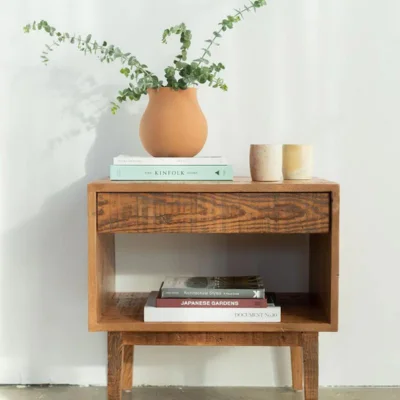
Your comfy couch or stylish coffee table may conceal a hidden danger—pressed wood furniture often contains formaldehyde, a known carcinogen.
They are, in fact, some of the most toxic items in your home. Flame-retardant treatments, commonly found in upholstery, can release harmful chemicals when they break down.
Prioritize solid wood or sustainably sourced furniture to create a safer haven at home.
Best Non-Toxic Furniture Brands:
6. Furniture Polish
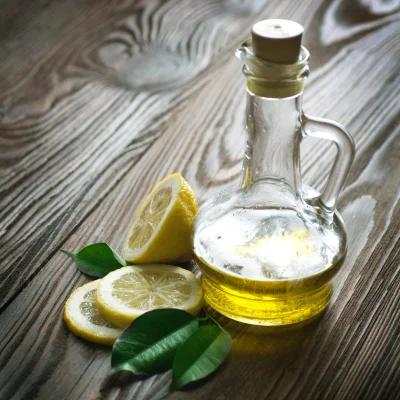
That gleaming shine after a furniture polish session may come at a cost.
Many commercial furniture polishes contain petroleum-based solvents and synthetic fragrances, contributing to indoor air pollution.
Opt for natural alternatives like a mixture of olive oil and lemon juice to maintain your furniture’s luster without compromising your indoor air quality.
7. Plastic Containers, Water Bottles
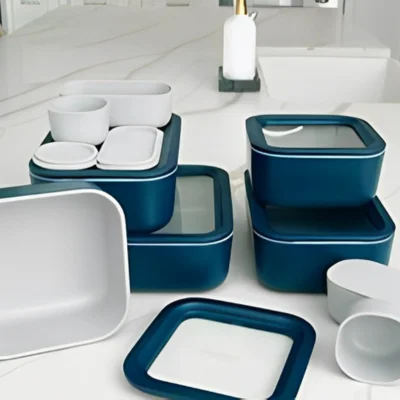
Despite their convenience, plastic containers and water bottles can be culprits of chemical leaching.
Plastics with BPA and phthalates can contaminate food and drinks, posing health risks.
To stay clear from these toxic things in your home, opt for glass or stainless steel containers for food storage and hydration to reduce your exposure to harmful substances while contributing to a greener planet.
Best Non-Toxic Food Storage & Reusable Water Bottle Brands:
8. Oven Cleaners
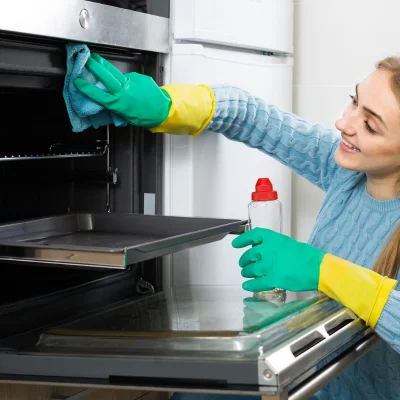
Next up is one of the most toxic things in your home, according to experts.
Tackling stubborn oven grime comes at a potential cost when using conventional oven cleaners.
These often contain corrosive chemicals like sodium hydroxide and butoxyethanol, releasing fumes that can irritate the eyes and respiratory system.
Choose safer alternatives like a mixture of baking soda and vinegar to give your oven a thorough clean without compromising your indoor air quality. There are also many non-toxic oven cleaners available.
Best Non-Toxic Oven Cleaner Brands:
9. Antibacterial Soaps
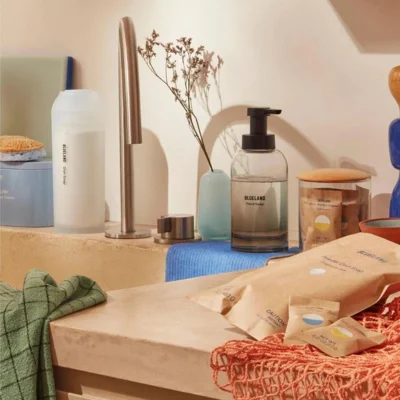
The convenience of antibacterial soaps is undeniable, but the active ingredient, triclosan, can pose risks.
Overuse contributes to antibiotic resistance, and triclosan has been linked to hormone disruption.
Opt for non-toxic antibacterial soaps or just regular soap and water, promoting effective hand hygiene without the unnecessary environmental and health concerns associated with antibacterial agents.
Best Non-Toxic & Antibacterial Hand Soap Brands:
10. Drain Cleaner
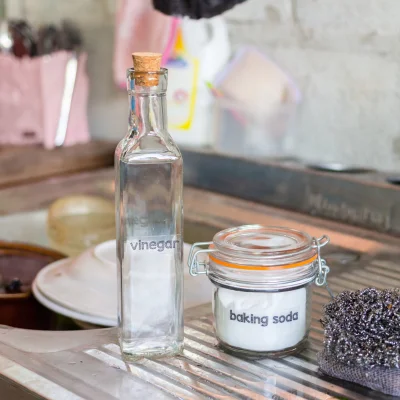
Moving on to one of the most powerful household cleaners that can kill you – drain cleaners!
Dealing with a clogged drain is a common woe, but many commercial drain cleaners contain harsh chemicals like sulfuric acid or sodium hydroxide.
Aside from their potential to cause skin and eye irritation, these chemicals pose environmental risks when flushed into water systems.
Choose safer options like a combination of baking soda and vinegar to clear clogs without compromising your safety or the planet’s well-being.
11. Bleach
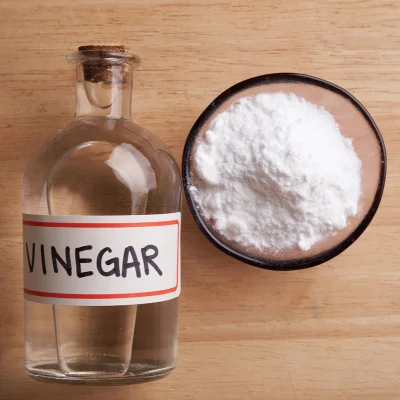
The go-to for whitening and disinfecting, bleach contains potent chemicals like sodium hypochlorite that can lead to respiratory issues and skin irritation.
When mixed with other common household cleaners, it can produce harmful fumes.
Consider gentler alternatives like hydrogen peroxide or vinegar for disinfecting without the harsh side effects.
12. Cleaning Products
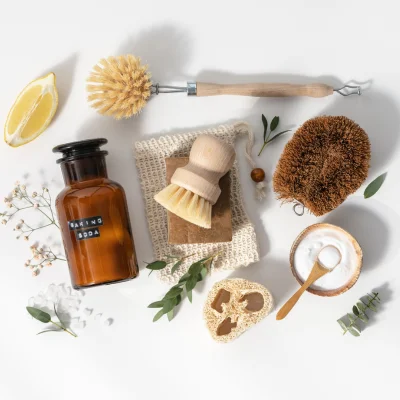
While convenient, many conventional cleaning products harbor a cocktail of chemicals, including ammonia, phthalates, and synthetic fragrances.
Prolonged exposure to these dangerous household chemicals may contribute to indoor air pollution and various health issues.
Opt for eco-friendly cleaning products or create your own using simple ingredients like lemon, vinegar, and baking soda to keep your home sparkling without compromising your well-being.
Best Eco-Friendly Cleaning Product Brands:
13. Toiler Bowl Cleaner
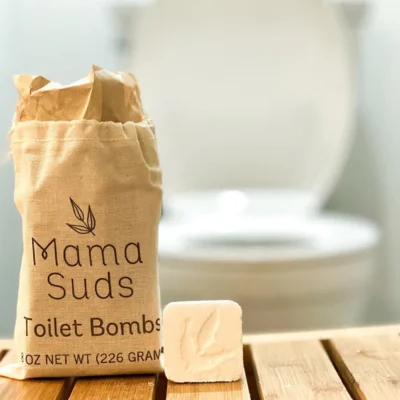
The quest for a spotless toilet often involves strong chemical toilet bowl cleaners.
These typically contain corrosive substances like hydrochloric acid that can irritate the skin, eyes, and respiratory system.
Choose less abrasive alternatives like baking soda and vinegar to maintain a clean toilet without exposing yourself to harsh chemicals.
Also, you check out the best non-toxic toiler bowl cleaners. Your bathroom and your health will thank you.
Best Non-Toxic Toilet Cleaner Brands:
14. Ammonia
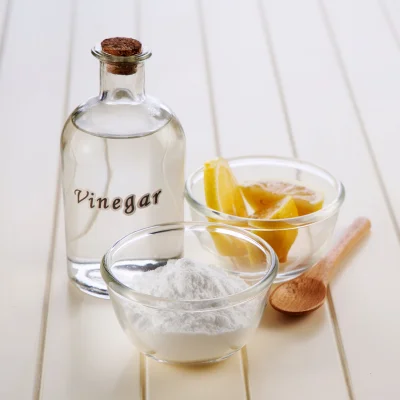
A powerful cleaning agent, ammonia can be found in various household products, but its use comes with health risks.
In fact, it is one of the most toxic things in your home! Exposure to ammonia fumes can irritate the eyes, nose, and throat and may lead to respiratory issues.
Opt for safer alternatives like vinegar or baking soda for cleaning tasks without compromising indoor air quality or personal well-being.
15. Laundry Detergents
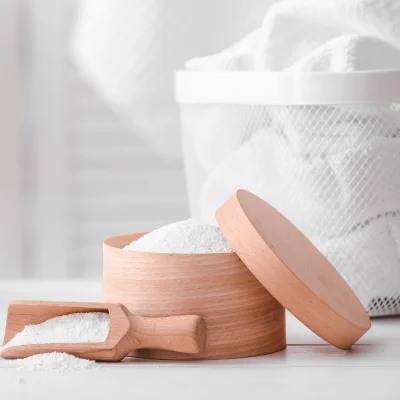
Granted, detergents might not be the most toxic household items, but they do cause an array of skin and environmental issues.
Traditional laundry detergents often contain synthetic fragrances, phosphates, and optical brighteners, which can be harsh on both fabrics and the environment. These chemicals may cause skin irritation and contribute to water pollution.
Choose eco-friendly and hypoallergenic laundry detergents, or explore DIY options using natural ingredients like soap nuts, or baking soda for a gentler and greener laundry routine.
Best Non-Toxic & Organic Laundry Detergent Brands:
16. Dishwasher Detergents
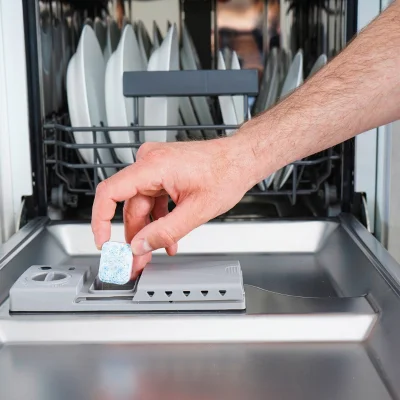
Dishwasher detergents frequently contain phosphates and chlorine-based compounds, contributing to water pollution and posing health risks. These chemicals can irritate the skin and eyes.
Opt for phosphate-free and eco-friendly dishwasher detergents, or experiment with homemade alternatives using ingredients like citric acid and borax to clean dishes without compromising your health or the environment.
Best Non-Toxic Dishwasher Tablet Brands:
17. Carpet Cleaner
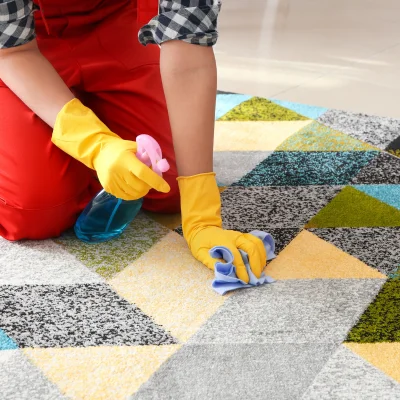
Seeking a fresh, clean carpet often involves commercial carpet cleaners with a blend of chemicals.
These dangerous household chemicals include perchloroethylene and ammonium hydroxide, known to cause respiratory and skin irritation.
Consider steam cleaning or using homemade solutions with ingredients like vinegar and baking soda to refresh your carpets without introducing potentially harmful substances into your living space.
18. Hand Sanitizer
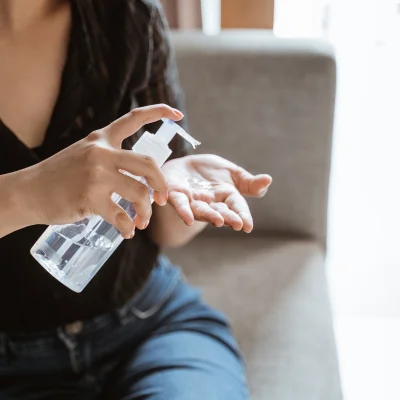
The convenience of hand sanitizers is undeniable, but many contain high levels of alcohol, fragrances, and other additives.
Overuse can lead to dry skin and contribute to the development of antibiotic-resistant bacteria.
When possible, opt for alcohol-based sanitizers with moisturizing agents, and use them judiciously in conjunction with thorough handwashing for a balanced and effective hygiene routine.
19. Perfumes
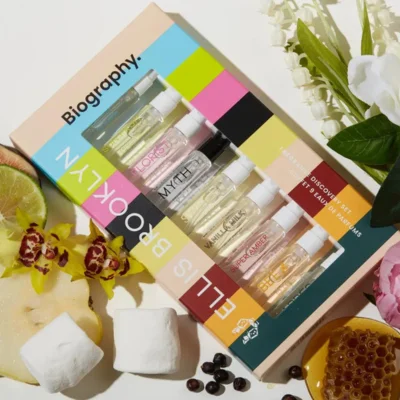
Fragrances in commercial perfumes often contain a mix of synthetic chemicals, including phthalates and allergens.
Prolonged exposure can lead to skin irritation, headaches, and respiratory issues.
Consider natural perfume alternatives like essential oils or choose fragrance-free products to enjoy pleasant scents without compromising your health.
Best Non-Toxic & Natural Perfume Brands:
20. Sunscreens With Oxybenzone

While sunscreens are crucial for skin protection, some formulations contain oxybenzone, a chemical linked to hormone disruption and coral reef damage.
Opt for mineral-based sunscreens with zinc oxide or titanium dioxide, providing effective sun protection without the potential environmental and health concerns associated with oxybenzone.
Best Non-Toxic Sunscreen Brands:
21. Personal & Beauty Products With Preservatives
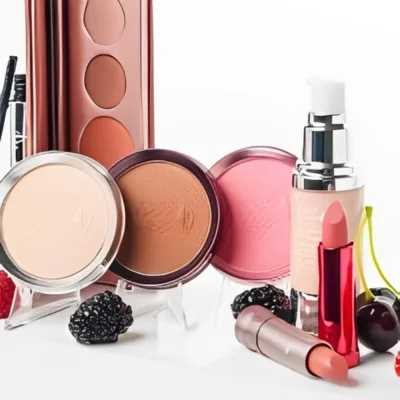
Many beauty products contain preservatives like parabens and formaldehyde-releasing agents to extend shelf life.
However, these compounds may pose health risks, including hormone disruption and skin irritation. This makes them one of the most useful yet toxic items in your home.
Choose sustainable beauty products labeled as paraben-free and explore natural alternatives with minimal preservatives to enhance your beauty routine without unnecessary exposure to potentially harmful chemicals.
Best Sustainable Makeup Brands:
22. Nail Polish
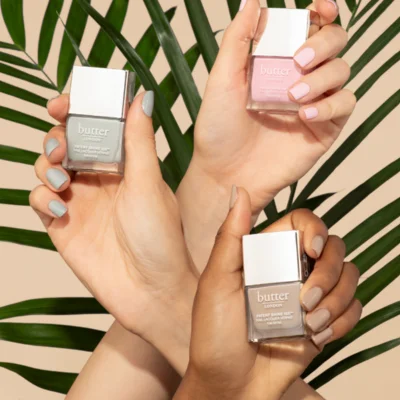
While vibrant nail colors can be appealing, conventional nail polishes often contain harmful ingredients like formaldehyde, toluene, and dibutyl phthalate.
Prolonged exposure can contribute to respiratory issues and may be linked to reproductive problems.
Opt for water-based or “5-free” nail polishes, which exclude the most harmful chemicals, to express yourself without compromising your well-being.
Best Non-Toxic Nail Polish Brands:
23. Deodorant
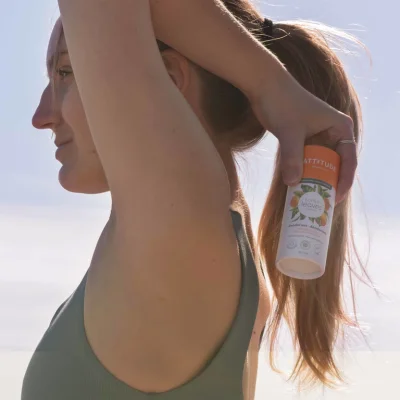
Traditional deodorants and antiperspirants often contain aluminum compounds and synthetic fragrances, raising concerns about potential health risks.
A recent review of 46 studies looking at aluminum exposure and the risk of developing AD concluded that aluminum is, in fact, a risk factor for the development of Alzheimer’s Disease.
Consider aluminum-free deodorants with natural ingredients like baking soda and essential oils to stay fresh without exposing your skin to unnecessary chemicals.
It’s a small switch that can make a big difference in your health.
Best Non-Toxic & Natural Deodorant Brands:
24. Shampoo With Sulfates
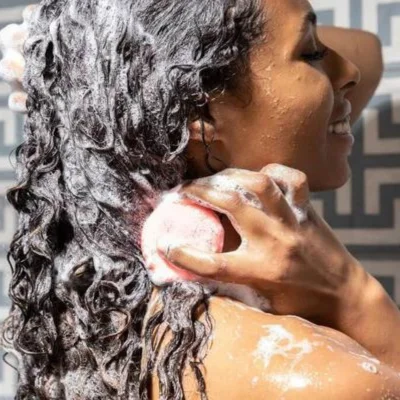
Let’s move on to yet another example of the most toxic things in your home that can cause everything from irritation to health issues!
Sulfates, commonly found in shampoos, can strip hair of natural oils and cause scalp irritation.
Additionally, some sulfates may be contaminated with 1,4-dioxane, a potential carcinogen.
Opt for sulfate-free shampoos, which are gentler on your hair and scalp, promoting healthier locks without the drawbacks associated with sulfates.
Zero Waste & Plastic-Free Shampoo & Conditioner Brands:
25. Menstruation Products
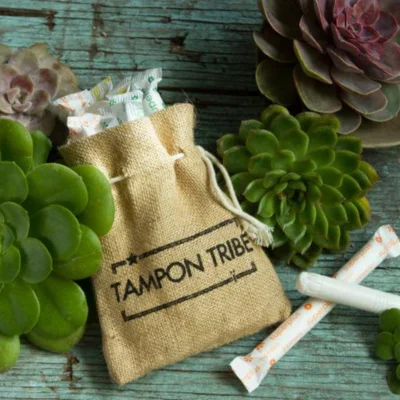
Did you know that most traditional tampons and pads contain chlorine, dioxins, and fragrances?
Chlorine is used in the bleaching process, and dioxins are harmful by-products.
Fragrances in menstrual products can contain undisclosed chemicals that may cause skin irritation and allergic reactions. Plus, they can take up to 800 years to decompose naturally.
So, what’s the alternative? Choose cups, tampons, and period underwear made from organic cotton or silicone without chlorine bleach or synthetic additives!
Best Non-Toxic & Organic Menstrual Product Brands:
26. Paint
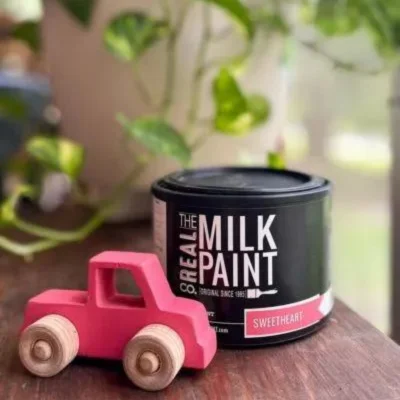
Hey, we love a freshly painted room as much as the next person, however, the type of paint we use, matters.
Traditional paints are by far one of the most toxic items in your home because they contain volatile organic compounds (VOCs), including chemicals like benzene and formaldehyde.
These VOCs are released into the air during and after painting, contributing to indoor air pollution.
Prolonged exposure can cause respiratory issues, and headaches, and may be linked to more severe health problems.
Choosing low-VOC or VOC-free paints helps create a healthier indoor environment by minimizing the release of harmful chemicals.
Best Zero-VOC & Non-Toxic Paint Brands:
27. Antifreeze
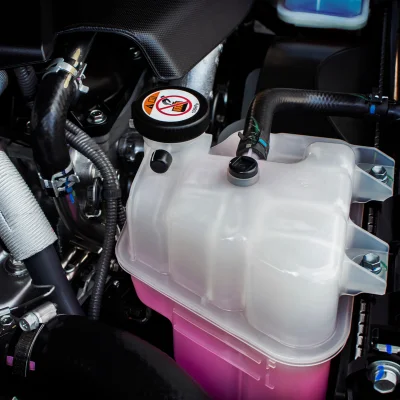
Antifreeze typically contains ethylene glycol, a highly toxic substance. Ingesting even a small amount can lead to serious health consequences, including kidney damage and, in extreme cases, death.
It’s crucial to handle antifreeze with care, store it securely away from children and pets, and immediately clean up any spills.
Proper disposal of used antifreeze is essential to prevent environmental contamination and safeguard water sources from this hazardous chemical.
If you want to stay clear of all risks, opt for a stellar, non-toxic formula instead.
28. Dryer Sheets
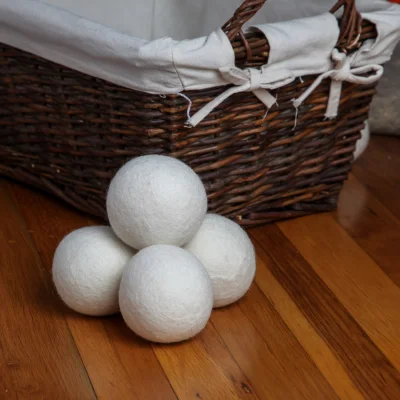
Dryer sheets often contain a cocktail of chemicals, including synthetic fragrances and compounds like benzyl acetate, which is linked to respiratory issues, and chloroform, a potential carcinogen.
These chemicals can transfer onto clothing and, subsequently, onto your skin.
The alternative? Opt for options like wool dryer balls, which can be reused and are free from harmful chemicals, or create your own dryer sheets using natural fabrics and essential oils for a more eco-friendly and health-conscious approach to laundry care.
29. Mothballs
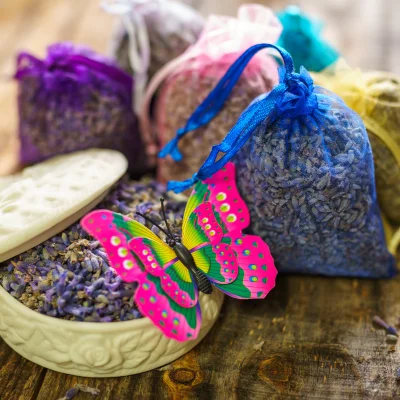
Did you know that mothballs are, in fact, some of the most toxic items in your home?
Mothballs often contain naphthalene or paradichlorobenzene, both of which release toxic fumes.
Prolonged exposure can lead to respiratory issues, headaches, and, in severe cases, damage to the liver and kidneys.
It’s essential to use mothballs sparingly and in well-ventilated spaces. Consider natural alternatives like cedar sachets to protect your clothes without resorting to harmful chemicals.
30. Bedding With Synthetic Materials & Dyes
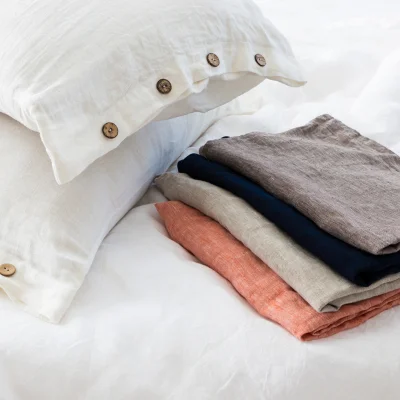
Bedding made from synthetic materials like polyester and treated with dyes often contains harmful chemicals such as formaldehyde and AZO dyes, which make up 60-70% of fabric colorants.
These substances can cause skin irritation and may be linked to long-term health issues.
Go for organic and sustainable bedding options made from natural, organic materials and free from harmful dyes to create a safer and more comfortable sleep environment.
Best Sustainable Bedding Brands:
31. Weed Killers
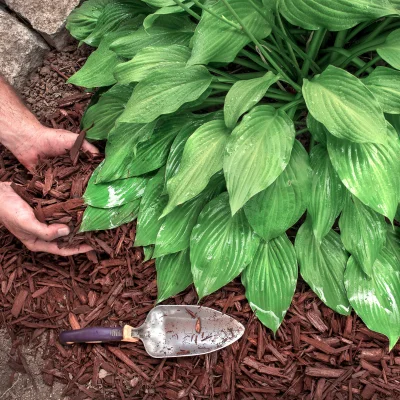
Common weed killers often contain herbicides with active ingredients like glyphosate. Prolonged exposure can pose health risks, including potential links to cancer.
Additionally, these chemicals can leach into soil and water, impacting ecosystems.
Consider alternative weed control methods such as manual weeding, mulching, or using eco-friendly herbicides to maintain your garden without compromising your health or the environment.
32. Bug Sprays
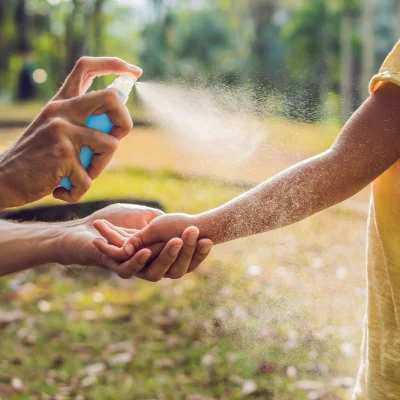
We don’t particularly like when bugs forcefully take over our home either.
However, conventional bug sprays often contain chemicals like DEET, which can cause skin irritation and, when used excessively, may lead to more severe health issues. Additionally, these chemicals can have environmental implications.
Choose natural bug spray alternatives containing essential oils like citronella, eucalyptus, or tea tree oil for effective insect repellent without the potential risks associated with synthetic chemicals.
Best Non-Toxic Bug Spray Brands:
33. Fertilizers
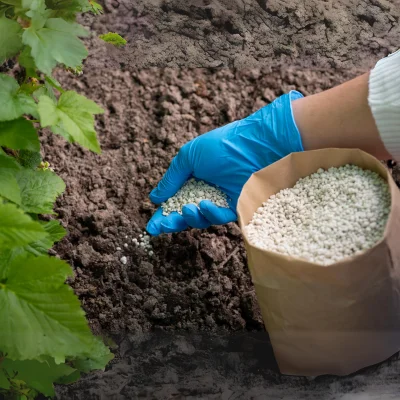
These fertilizers are like fast food for plants – quick and satisfying at first, but with potential long-term consequences.
They contain high levels of synthetic nitrogen compounds that can lead to nutrient imbalances and harm soil health.
Also, when overused, can accumulate in the soil, affecting microbial activity and potentially harming beneficial organisms.
Plus, while ammonium fertilizers provide plants with nitrogen, they come with a potential side effect – ammonia emissions.
Here are the 10 best natural homemade fertilizers for indoor plants which contain nutrients like magnesium, phosphorus, potassium, sulfur, and calcium to maintain the health and structure of a plant and its surrounding soil.
34. Flame Retardants
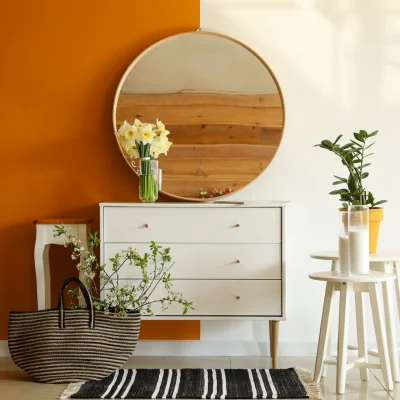
Flame retardants are commonly used in various products, including furniture, mattresses, and electronics.
They often contain chemicals like polybrominated diphenyl ethers (PBDEs), which have been linked to health issues such as hormone disruption and developmental problems.
To stay clear from these dangerous household items, opt for flame-retardant-free products or those labeled as meeting safer standards to reduce your exposure to these potentially harmful chemicals.
35. Gas Space Heaters
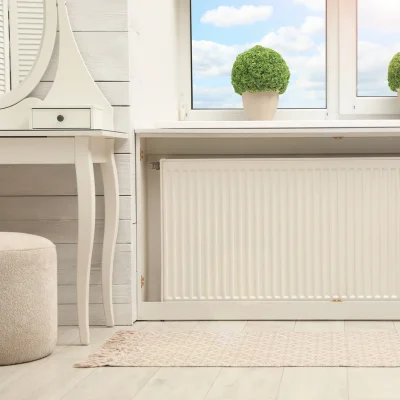
Gas space heaters can emit carbon monoxide and nitrogen dioxide, both of which can be harmful in high concentrations. Poorly ventilated spaces can lead to indoor air pollution and adverse health effects.
It’s important to ensure proper ventilation when using gas space heaters, and also consider alternative heating options like electric heaters or well-maintained central heating systems to mitigate the risks associated with gas-powered appliances.
How can you reduce toxins in your home?
- Choose Natural Cleaning Solutions
Opt for cleaning products that use natural ingredients. You can make your own cleaners using items like vinegar, baking soda, and essential oils. These alternatives are effective without the harsh chemicals present in many commercial cleaning products.
Here’s our guide to the 5 Super Simple Zero Waste Cleaning Swaps For A Healthy Home!
- Enhance Ventilation
Promote good air circulation by regularly opening windows and doors. Adequate ventilation helps dissipate indoor pollutants and ensures a continuous flow of fresh air, contributing to improved indoor air quality.
- Invest In Air Purifiers
Consider using air purifiers equipped with HEPA filters to trap and remove airborne particles, allergens, and pollutants. This is particularly beneficial for individuals with respiratory conditions or allergies.
- Minimize Plastic Usage
Reduce your reliance on plastic products, especially those containing harmful substances like BPA. Choose alternatives such as glass, stainless steel, or BPA-free plastics for food storage and everyday items.
How do toxic household items impact children and pets?
Toxic household items can have significant and sometimes severe impacts on the health of children and pets due to their smaller size, developing immune systems, and behaviors that may lead to accidental exposure.
Young children are prone to exploring their surroundings and may inadvertently ingest toxic substances. This can lead to poisoning, affecting internal organs and potentially causing long-term health issues.
What’s more, some toxic household items, like certain cleaning products or air fresheners, release volatile organic compounds (VOCs) that can irritate the respiratory system, causing issues such as asthma or allergies.
Plus, contact with certain cleaning agents or pesticides can lead to skin irritation or allergic reactions in children, especially those with sensitive skin.
Pets, especially dogs and cats, may chew on or consume items within their reach. Ingesting toxic substances can result in gastrointestinal distress, neurological issues, or, in extreme cases, fatalities.
Pets may experience skin issues, including rashes or dermatitis when exposed to certain chemicals or toxins present in cleaning products.
So, it would be best to stay clear of dangerous household items.
What is the deadliest household chemical?
One of the deadliest household chemicals commonly found in homes is sodium hydroxide, also known as lye or caustic soda.
Sodium hydroxide is an extremely corrosive substance with the potential to cause severe damage to tissues upon contact.
Sodium hydroxide is a key ingredient in some drain and oven cleaners due to its powerful ability to break down organic matter and grease.
How can I identify potentially toxic items in my home?
Firstly, familiarize yourself with common household toxins, such as lead-based paint, asbestos, or certain plants that may be harmful if ingested.
Then, check the labels of cleaning products, detergents, and personal care items for hazardous chemicals. Look for warnings and symbols indicating toxicity.
Pay attention to any unusual symptoms or health issues experienced by family members, including pets. If there’s a sudden onset of symptoms, consider potential environmental factors.
Regularly check for product recalls, especially for items used in households with children. Manufacturers issue recalls for products found to be unsafe or containing hazardous materials.
Lastly, if in doubt or if you suspect the presence of hazardous materials in your home, consult with professionals.
This was your full guide to reducing toxins in your home!
There you have it – a full guide on how to reduce toxins in your home!
Our list of the most toxic items in your home covered a range of everyday household products and practices that may pose risks to health and the environment.
From cleaning products to furniture, and personal care items to building materials, try to identify the most dangerous household items on your own humble adobe and gradually replace them with eco-friendly, safe options.
And remember, the quest to replace the most useful and harmful things at home is not easy. In fact, most of us find it very challenging to completely eliminate all potentially toxic items from our homes. Don’t panic, take your time!
If you enjoyed this article, check out these other community favorites below!
 Enter To Win Over $1500+ In Non-Toxic Goodies!
Enter To Win Over $1500+ In Non-Toxic Goodies! 